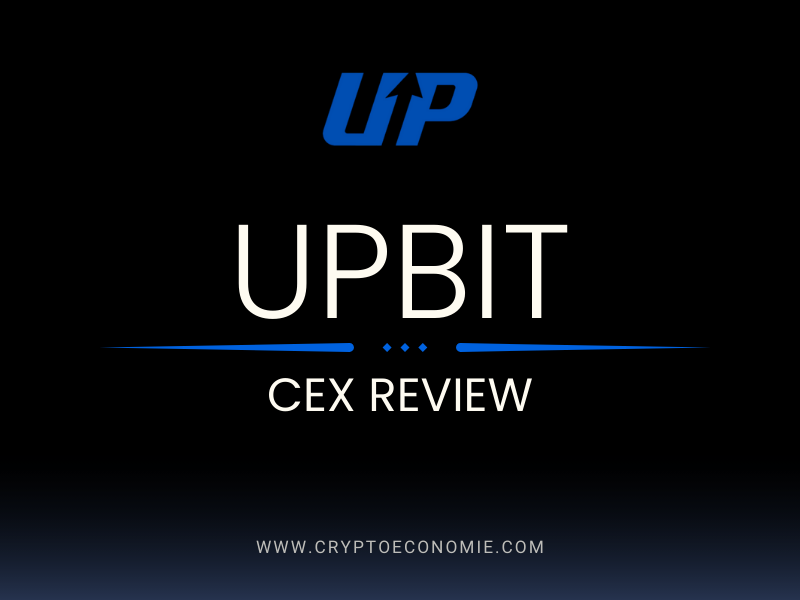Web 3! Advertising slogan or magic
2024-07-08 07:29:00

Web 3 is something we hear a lot about and all the outlandish claims being made by new brands, is it a bunch of gimmicks or is it really a technology that works as well as staff of moses?!
What is Web 3? Introducing Web 3 technology (Web 3.0) in simple language
Web 3.0 represents the third generation of the Internet, characterized by a decentralized framework that employs various technologies. This new Internet is designed to go beyond basic functions.
It not only processes user input accurately but also comprehends a wide range of communication methods, including text and voice. Such capabilities mark a significant shift in how users interact with technology.
Currently, we stand at the threshold of this Internet transformation. Several applications related to Web 3.0 are still in the initial stages of their development.
While these applications show promise, their full potential will only be realized once they are integrated into the broader web infrastructure. This integration is crucial for harnessing the capabilities of Web 3.0.
In this article, we will explore the concept of Web 3.0 technology, including an overview of its applications and the various technologies that underpin it.
By understanding these components, we can better appreciate what Web 3.0 offers and how it may change our online experiences in the near future.
also read :What is a decentralized cryptocurrency? A comprehensive review of the concept of decentralization
Technology of web 1 to web 3
in order to examine Web 3 technology and its application in the cryptocurrency market, we must keep a few points in mind. First of all, th concept is not new.
Jeffry Zeldman, one of the first developers of Web 1.0 and 2.0 applications, announced his support for Web 3 in a post in 2006, but discussions on the topic began much earlier in 2001.
The third web will be born through the natural evolution of the older generation of web tools in combination with advanced technologies such as artificial intelligence and blockchain.Internet will be an upgrade from its predecessors, namely the first and second generations of the Internet.
also see : Understanding Blockchain | A Simple Explanation
Web 1.0 era (1985 to 2005)
Web 1, which was called "Static Web", was the first and most reliable Internet in the 90s, despite providing limited access to information and low user interaction. At that time, it was not possible to create user pages or even leave comments for articles.
Web 1.0, unlike Web 2 and Web 3, did not have any algorithm for screening Internet pages, which made it very difficult for users to find information related to the desired topic.
Simply put, the first generation Internet was like a one-way highway with a narrow lane where content creation was done by only a few people and most information was provided by directories.
Web 2.0 era (2005 to now)
The social web or web 2 made the internet more interactive thanks to advances in web technologies such as JavaScript, HTML5, CSS3, and more, which allowed startups to build interactive platforms like YouTube, Facebook, Wikipedia, and many others.
Since it is now possible to distribute and share data between different applications and platforms in Web 2 and Web 3, this has paved the way for the flourishing of user-centered content production and social networks.
The toolset of the current Internet age was developed by a number of web innovators, such as Jeffrey Zeldman, whom we talked about earlier.
Web generation 3 (waiting for the emergence)
Web generation 3, also known as Web Three, represents the next step in the growth of the internet. This phase aims to make online platforms smarter and more efficient by using advanced AI systems.
These systems will process information in a manner closer to human thinking. This capability will allow them to run intelligent programs that assist users in various tasks.
Tim Berners-Lee has described the concept of the Semantic Web. He suggests that it should facilitate "automated" connections between different systems, individuals, and everyday devices.
To achieve this, both people and machines will participate in creating content and making choices. This collaboration will lead to the intelligent production and distribution of content that is tailored to meet the specific needs of each internet user.
As a result, individuals will receive more relevant information and recommendations. Instead of a one-size-fits-all approach, users will experience a more personalized internet that adapts to their unique preferences and behaviors.
This shift has the potential to transform how we consume and interact with digital content. Ultimately, Web Three aims to create a more engaging and effective online experience for everyone involved.
Feeling confused? That's completely normal. Welcome to the interesting world of Web 3. Don't worry; we'll provide you with more information as we go along.
What is exactly Web 3?
Web 3 is the emerging third generation of the Internet, where websites and applications use technologies such as machine learning, Big Data, decentralized ledger technology (DLT) and Others are able to process information in a human-like manner.
also read : What is distributed ledger technology (DLT)?
Web 3.0 was named "Semantic Web" or "Semantic Web" by Tim Barners-Lee, the inventor of the World Wide Web, and its goal is to become a more autonomous, intelligent, and open Internet. Was.
The definition of Web3 is as follows:
A central controlling entity is no longer necessary. Without these controlling bodies, it becomes impossible to oversee users' information or impose censorship.
This change empowers users, giving them full authority over their data. They will be able to keep their information secure through advanced cryptographic measures, ensuring that marketers and advertisers cannot access it without permission.
Users will have the freedom to share their information as they choose, deciding what to disclose and to whom.
The third generation of the web offers a significant improvement in accessibility. Currently, many applications are limited to specific operating systems, which restricts their usability across different devices.
In contrast, this new web version enables applications to run on any device, regardless of its operating system. Users will benefit from this flexibility without facing any additional costs associated with different hardware.
As more devices connect to the Internet, vast amounts of data are generated.
This data can be harnessed by algorithms to analyze user behavior and preferences. By doing so, companies can tailor their products and services to meet user needs quickly and accurately.
The speed at which businesses respond to these insights will enhance overall user experience, allowing for more relevant offerings.
Decentralization plays a crucial role in protecting users' information. Since data is no longer stored in a single location, it is much harder for hackers to access.
To successfully steal information, attackers would need to compromise the entire network, a task that is nearly impossible. This new structure significantly reduces the risk of hacking and information theft, providing users with greater peace of mind regarding their data security.
down the entire network to hack and steal information, which is practically impossible.
also read : 5 of the best web 3 projects that you should invest in
Limitations of the third generation web
Scalability
The third generation web, often referred to as Web3, faces several significant limitations that hinder its effectiveness and widespread usage.
One major issue is scalability. Unlike traditional web systems, transactions on Web3 are inherently slower due to its decentralized nature. The reliance on multiple nodes for consensus means that processing times can lag, especially during peak usage.
This slowdown can frustrate users who expect quick responses, limiting the system's overall appeal.
User experience is another critical challenge. Engaging with Web3 applications often demands multiple steps, specialized software, and a certain level of training to navigate effectively. This complexity can make it daunting for the average user. As a result, potential users may shy away from adopting these new technologies, leading to slow growth in the user base.
Accessibility remains a pressing concern as well. Many users find themselves unable to access the third generation web due to a lack of integration in today's standard web browsers.
Without proper support or plugins, navigating Web3 becomes impractical for those who are not technically inclined. This barrier limits who can participate in the decentralized ecosystem.
Finally, the cost of operating within the Web3 framework must be considered. Successful decentralized applications typically deploy only a small portion of their code on the blockchain because the expenses involved can be substantial.
This limitation can restrict developers from fully utilizing the advantages of decentralization, as financial constraints force them to compromise on their application’s potential.
These limitations collectively pose significant hurdles for the third generation web. Addressing them is essential for unlocking the full benefits of a decentralized internet.
Key features of the web 3
To fully understand the next generation of the Internet, we need to look at four key characteristics of Web 3.0:
Ubiquity
Semantic Web
artificial intelligence (AI)
3D graphics
learning
Omnipresence means being or having the capacity to be everywhere, especially at one moment. In other words, ubiquity means ubiquitous.
In this definition, because, for example, Facebook users are able to receive and share an image instantly, and in the next step, due to its availability to all people regardless of their geographical location, it is considered ubiquitous as long as they have access to this platform.
Yes, Web 2.0 also has the feature of ubiquity.But Web Three takes this a step further by making the Internet accessible to everyone, anywhere, at any time.
Therefore, at some point, due to the introduction of new types of smart devices by the Internet of Things technology, devices connected to the Internet, like Web 2, will no longer be focused on computers and smartphones.
Semantic Web
Semantics is the study of how words relate to each other and their meanings. Mr. Berners-Lee explains that the Semantic Web is a system that allows computers to comprehend and analyze various forms of data available online.
This includes not just textual content but also transactions and communication among users.
The question arises: how is this analytical process implemented in real life?
To illustrate, consider two sentences with different structures yet identical meanings. This scenario shows that semantics focuses on the underlying meanings and emotions attached to the words rather than their exact arrangement.
By employing semantic analysis on the web, devices are able to interpret these meanings and feelings by examining vast amounts of data. This capability results in a more enriched experience for internet users, thanks to enhanced data connectivity.
Artificial intelligence
Artificial intelligence (AI) plays a significant role in this context. According to Wikipedia, AI refers to the ability of machines to demonstrate intelligence.
In the context of the Semantic Web, machines that can understand and decode meanings, along with the emotions underlying various data sets, represent a new wave of intelligent technology.
While Web 2 also offers certain capabilities, it primarily centers around human interaction, which can lead to problematic behaviors. Such behaviors include biased product reviews and counterfeit ratings.
Take online review platforms like Trustpilot, for example. These sites enable users to provide feedback on products and services.However, there are instances where companies can manipulate this system by acquiring positive reviews.
They may pay a group of people to create favorable opinions on their offerings. This highlights a clear need for artificial intelligence to sort through the reviews and identify genuine feedback versus fraudulent ones.
By doing so, AI can help ensure that users receive trustworthy information and insights, ultimately enhancing the reliability of data available on the internet.
Conclusion
Web 3.0 represents a significant change in how we use the Internet, focusing on giving users more control, improving security, and creating personalized experiences. This next phase of the Internet aims to put the power back into the hands of the individual.
With the arrival of new technologies in artificial intelligence and decentralized systems, users can look forward to an online experience that is smarter and more adaptive.
These advancements will likely lead to websites that understand your preferences and provide content that truly meets your needs. This kind of tailored interaction is set to make our time online more enjoyable and more productive.
As we approach this new chapter, it is important to grasp what Web 3.0 can offer. Understanding its features and benefits is vital for those who want to keep up with future changes in how we connect and engage online.
Prepare yourself for a digital experience that is not only secure but also aligns closely with your individual interests and habits. By staying informed about these developments, you can discover new ways that Web 3.0 can enrich your online activities and enhance your overall digital life.
also see : Web 2 and Web 3 Key Differences You Should Know
Jerard bartez
Related News


Add a Comment
Please login to your account to post a comment.
Popular News
A Golden year for gold Could Bitcoin reach new price highs following gold lead?
2024-09-27 07:39:00
Meta $4.5 billion loss in the last 3 months. Metaverse bubble destruction domino activated?
2024-08-02 13:44:00
Important tips for the successful entry of inexperienced people into digital currencies
2024-03-14 10:32:00
TonKeeper Wallet Tutorial
comprehensive coinbase exchange review











cryptoeconomie is an independent media outlet covering the cryptocurrency industry. Its journalists adhere to a strict set of editorial policies. cryptoeconomie has adopted a set of principles aimed at ensuring the integrity, editorial independence and freedom from bias of its publications. cryptoeconomie provides essential analysis of the cryptocurrency market. Our goal is to inform, educate and share valuable information with our readers. Our editorial content is based on our passion for providing unbiased news, in-depth analysis, comprehensive cryptocurrency price charts, insightful opinions, as well as regular reporting on the social transformation that cryptocurrencies are bringing. We believe that the world of blockchain and cryptocurrencies will grow exponentially and become an integral part of our daily lives. We work every day to help educate our readers and raise awareness of the complexities and benefits offered by today’s digital revolution.
Categories
- NFT
- Defi
- Metaverse
- News
- Web3
- Crypto Exchanges News
- Stablecoins
- Altcoins
- Bitcoin
- Technologi
- Artificial Intelligence
- Crypto Learning
- Crypto Glossary
- Crypto Exchanges Training
- Ethereum
- Solana
- Regulation
- Crypto Reviews
- Centralized Exchanges
- Decentralized Exchanges
- Crypto Wallet
- Crypto Investment Training
- Trading Education
- Crypto Projects
© Copyright 2025 cryptoeconomie.com . Design by: uiCookies
























Comments
mores
LIke
Replay
WaziR
It was great
Replay
fozooo
thank you
The tone and writing of your articles is very catchy
Add content about NFTs
Replay
wallther
very nice
Replay
Ramedan majed
Web3 can increase cyber security to a great extent if the necessary infrastructure is created.
Replay
patrik
Big Like
Replay
michel
Nice post
Replay
laora
It was a very complete and comprehensive article, thanks to the cryptotimes content team
Replay